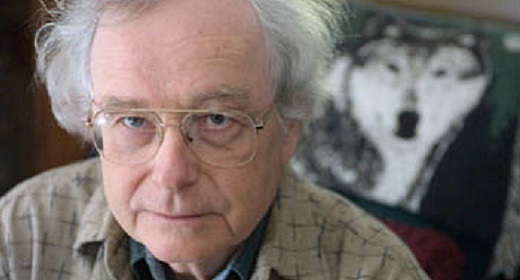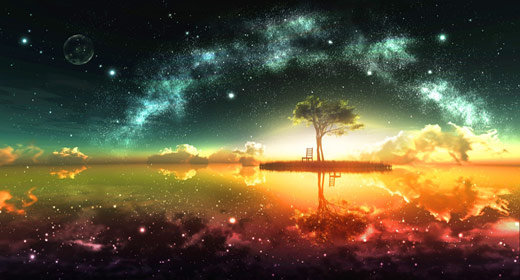by Ralph Metzner Ph.D: En-theo-genesis means experiencing and recognizing the divine inner source of all beings…
both human and non-human, both microcosmic and macrocosmic. My main thesis is the following: in the expanding worldview of our time, the scientific understanding of humans and the natural world will be increasingly united with a recognition of the spiritual core of all earthly existence.
Experiences with substances such as LSD have been called psychedelic (“mind manifesting”), hallucinogenic (“traveling in the mind”) and entheogenic (“connecting to the divine within”), as well as other terms. At the beginnings of the Harvard psilocybin projects, Timothy Leary coined the term “consciousness expanding” to describe the experience with these substances. In a letter I saw only recently, dated 1961, Albert
Hofmann expressed his appreciation for the concept of “consciousness expansion” because it pointed to the wider potential applications of these substances, beyond the pharmacological and the psychiatric. Subsequent research with psychedelics in the enhancement of creativity and the production of religious experience have explored these
potentials, with significant implications for an expanded worldview.
I have myself come to prefer the terminology of consciousness expansion to neologisms like psychedelic, which has acquired all sorts of extraneous associations, even referring to a genre of pop art. On the other hand, the term entheogenic, though it explicitly recognizes the potential spiritual dimensions of experiences with these substances,misleadingly suggests that “connecting to the divine within” is an effect of the drug, ignoring the critical importance of set and setting.
This is the peculiar linguistic and conceptual challenge posed by these substances. They change the way the brain and nervous system perceives and interprets reality, both inner and outer, amplifying and vivifying perception. Because of this it is impossible to specify any particular drug effect, unlike the drugs that affect respiration or kidney function, or even the stimulants and sedatives, which simply move our awareness up or down the dimension of energy or arousal.
Expansion of consciousness, or magnification of perception, or amplification of awareness, are all phrases that are suggestive of the non-specific content of experiences with these drugs. Tim Leary used to point to the analogies of psychedelics with the microscope and
telescope as scientific tools for the amplification and magnification of perception. What we see through the microscope is a function of what we put on the slide and what we see through the telescope is a function of the part of the sky toward which it is oriented. The perceptual instruments allow us to observe phenomena at a scale or reality to which we don’t have access in our ordinary functional waking state.
Expansions of consciousness can and do occur naturally and spontaneously in the course of everyday life – when we wake up after sleep, when we travel and explore some area with interest and curiosity, or when engaged in mindful meditation, erotic communion or aesthetic contemplation. The ultimate expanded state is the cosmic consciousness, or mystical oneness with the Divine – an ineffable, transcendent state in which all separateness is dissolved. Like all states of consciousness, such states are transient, though the understanding and serenity gained may stay with us for a lifetime.
In the famous “Good Friday” study on “experimental mysticism,” conducted in the course of the Harvard research studies with psilocybin, Walter Pahnke demonstrated that when a group of theology students with an interest in religious experience where given a consciousness expanding substance in a religious ceremonial setting, a significantly high percentage had classical mystical experiences. When Charles Tart interviewed several long-term Buddhist meditators and meditation teachers, asking them about their use of LSD or other psychedelics, most of them stated that while they did not use drugs regularly, their psychedelic experiences did play a significant role at the initiation of their practice – providing them with an inspiring preview or vision of what was possible.
I myself had a similar experience when, after my initial involvement with psychedelics during the 1960s, I immersed myself for about ten years in the intensive and exclusive study of the light-fire yoga practices taught by Russell Schofield in the School of Actualism. My practice of the meticulous meditation methods was accompanied by only slow changes over time but I felt inspired and encouraged by the more vivid, though
unsustainable visions I had had with psychedelics.
The experience and process of consciousness expansion may be more fully appreciated by contrasting them with consciousness contraction. The prototypical contraction of awareness is concentration and focus: when I narrow the scope of attention on some object of sense perception (what I’m seeing or hearing) or on some skilled expressive
performance (what I’m doing or making), I am thereby excluding more peripheral elements of potential experience. We are constantly modulating the scope of perceptual focus, widening and narrowing according to our intentions and the requirements of the situation.
In the course of ordinary life our attention and awareness is often drawn to particularly insistent or prominent (i.e. loud or bright) stimuli. Or we may be captivated by the attractive appearance of an individual or a work of art. In meditation practice, the motionless and eyes-closed position facilitates detachment from the compelling sense stimuli of the external world and an inward-turning of attention towards our own
mental and imaginal processes.
Whereas intentional concentrative contraction of awareness is essential to all learning, creative expression, skilled performance and effective communication, involuntary contractions of consciousness occur in states of fear and rage, when narrowed eyes, adrenal activation and tensed-up muscles ready the organism for the flight-or-fight reaction to a perceived threat. Such escape, avoid or attack reactions may become
conditioned into repetitive fixations – and develop into the habitual obsessions, compulsions and addictions that Sigmund Freud called the “discontents of civilization.”
The analysis of expansions and contractions of consciousness helps us understand why the consciousness-expanding drugs and plants can be, and have been used in the treatment of addictions and compulsions. Even a slight and temporary expansion of awareness helps us perceive alternative choices of action and expression and liberate us from instinctive or acquired fixations. Expansions of consciousness lead to greater freedom of choice and more ability to respond (“responsibility”) to our situation with conscious intention in a healthy manner.
The concepts of consciousness expansion and contraction may also be applied at the level of collectives, such as family, community and society. Historians and sociologists speak of waves of fashion, of mass hysteria and the delusions of crowds, as well as the organized collective madness of war. In my book Ecology of Consciousness (2017), I describe the
period of the 1960s as a time in Western culture when waves of collective consciousness expansion moved through society – and were followed, in the 1970s and ‘80s, by reactive contractions of fascist control, as “the empire strikes back.”
The historian Theodore Roszak in his book The Making of a Counter Culture (1968) identified the social transformation movements of the 1960s as being in opposition to mainstream culture, revolutionary in thought and attitude. I suggested that these counter-cultural movements were really waves of collective consciousness expansion – and that the opposition to existing mainstream culture was only a first step, a temporary means to a further end. Just as, in the archetypal consciousness expansion of birth, the fetus struggles against the contractive containment of the mother’s body, in order to subsequently
be born into a freer, more expansive existence.
At the level of society, the cultural transformation movements of the 1960s (which included the use of consciousness expanding drugs to an indeterminate extent) involved both opposition to existing forms of social order and exploration of newer, freer and more expansive forms. In our conversational memoir Birth of a Psychedelic Culture (2010), Ram Dass and I discussed the social ramifications and cultural extensions of
our initial psychedelic experiments at Harvard, and the ensuing experiments in communal living at Millbrook. New forms of living community arose in various parts of the United States; as well as rockmusic celebrations involving thousands, fuelled by LSD and cannabis, culminating in the 1969 festival of 500,000 in Woodstock, NY.
The anti-war and peace movement struggled against the imperialist American war-system, and held an expansive vision of a society in peaceful co-existence with other nations. The civil rights movements protested and marched against racist prejudice and discrimination, and was inspired by the visionary rhetoric of M.L. King who wanted “black children and white children to go to school together.” The feminist movement opposed sexist attitudes enshrined in patriarchal institutions and created group processes of “consciousness raising” for women to articulate expanded roles in their families and communities. A decisive moment in the growth of the American environmental movement was the 1963 publication of Rachel Carson’s Silent Spring – which defined an experience of expanding awareness, as people began to search for and expose the deadly pollutants in soil and food, water and air, developing cleaner, greener technologies. A revolution in sexual relations and expressions occurred as the invention of the contraceptive pill and changing attitudes toward homosexuality facilitated the transcendence of conventional forms of marriage and family relations.
Although psychedelic drug experience played an indeterminate role in these various popular movements, the quality of consciousness expansion was unmistakable. In music, the arts, fashion and literature, an upsurge of creative innovation countered and expanded the aesthetic norms and forms of prior generations – so that the word psychedelic even came to refer to a genre of pop art, with its swirling, multi-colored paisley patterns.
Expansions of consciousness can occur in the experience of an individual (birthing, awakening, mystical oneness) and analogously in the formation of communities and in large-scale social movements. Individual experiences and collective social processes on Earth may also reflect changes in the cosmic environment. The philosopher Richard
Tarnas, in his work Cosmos and Psyche (2006), has described the archetypal constellations of the planets synchronic with historical movements in collective consciousness over the past several hundred years. The 1960s period was marked by significant “hard aspects” of Uranus, Jupiter and Neptune – all associated with expansions of consciousness; as well as Saturn, the archetype of contraction, limitation and boundaries; and Pluto, the archetype of violent systemic eruptions and upheavals.
In the lived experience of an individual, we can seen how the development of a human personality involves expanding circles of awareness and identification. Starting with the momentous emergence of birth and the intimate mother-infant bond, an individual’s sense of identity expands throughout the formative years: the child of a family living in a house, becomes the man or woman of a community living in a town or village, and then a member of a society occupying one of the continents on planet Earth. We identify with a nation state – seeing ourselves as Americans, Italians, Russians, or with a larger continental system – as Westerners or Asians or Africans.
In the 16th and 17th century in the West, there was a historic expansion of collective consciousness from a religion-based earth-centered worldview to a science-based sun-centered worldview. In the following centuries the scientific cosmology, with its exclusive focus on the material realm, has established itself throughout the world. Along with
the spread of the materialist worldview, the relentlessly exploitative, profit-driven, industrial (“cash-plus-trash”) capitalist economic system has been turning ever greater segments of the biosphere into wasteland, unable to serve as life-support for the teeming human populations.
In the 20th century and beyond, we are seeing the slow and halting emergence of human population groups from ethnocentric, tribal and nationalist identifications to increasing identification with the global “family of man” – a sense of belonging with this planet, this Earth, and a sense of responsibility for all humans, regardless of ethnicity or nationality or religion.
At the same time, the ecology movements have made us aware of the limitations of our human-centered, human-superior attitudes, what some have called the “arrogance of humanism,” and the disastrous consequences of this attitude for all non-human life. Our worldviews need to expand to become eco-centric and biospheric – so that we care equally for the preservation of all life on this planet, human and nonhuman. This is the shift that is needed if our civilization is to survive the impending collapse of the planetary environment.
In the worldview changes now taking place, we hear a lot about globalization – but this refers usually to the globalization of markets and profits for multinational corporate cartels. What we need more urgently for the well-being of our planetary civilization is a globalizing circle of caring and compassion, in which all of us take responsibility for all of us. Eventually we may develop a conception of ourselves as living with myriad billions of other human and non-human beings on Earth, in a vaster cosmos probably teeming with inhabited planetary worlds and civilizations.
Entheogenesis means the growing realization that we human beings and the world around us are much more than simply material organisms living and evolving on a material planetary body. We are multidimensional spiritual, cosmic, noetic, psychic and earthly beings. The Sufi mystics offered the analogy that we humans are the occupants of a
multi-storied mansion, but have focused our attention and awareness for so long on the ground floor, that we have forgotten even the existence of the higher levels, much less the methods of accessing them. In the Eastern religions, Hinduism and Buddhism, the existence and reality of higher, spiritual dimensions of our being is accepted as a matter of course, and yogic methods of meditation developed to access them.
In the West, the work of C.G. Jung aimed to show that the materialistic, scientific worldview needs to be expanded to recognize the reality of the psychic dimension, which for Jung also included the spiritual which he referred to as the archetypes of the collective unconscious. The work of Stanislav Grof aimed to show how psychedelic psychotherapy and holotropic breathwork could access the transpersonal or spiritual dimensions, especially as they intersect with memories of the birth experience.
The central consciousness-expanding insight that emerges from psychedelic, entheogenic states and is confirmed by the perennial spiritual traditions of East and West, is that at every level, from macrocosmic to the micro-cosmic, from atoms and animals, to trees and
planets and stars, Spirit dwells within created forms and expresses through them.
In my view, the greatest expansion of the collective worldview will come with the recognition of the presence of highly-advanced extraterrestrial civilizations in our world and in our time. We may then come to recognize that we live in a lawful universe populated by a vast variety of civilizations, with human-like, conscious, intelligent beings, with whom we can communicate – some of whom may have been visiting Earth for a long time.
The recognition of and communication with extra-terrestrial intelligences on a large scale can probably only come when we have passed the two key criteria of planetary maturity – that we no longer settle our differences using violence and no longer degrade our
planetary environment. We may then be able to enter into the inconceivably vast galactic community of civilizations.










































